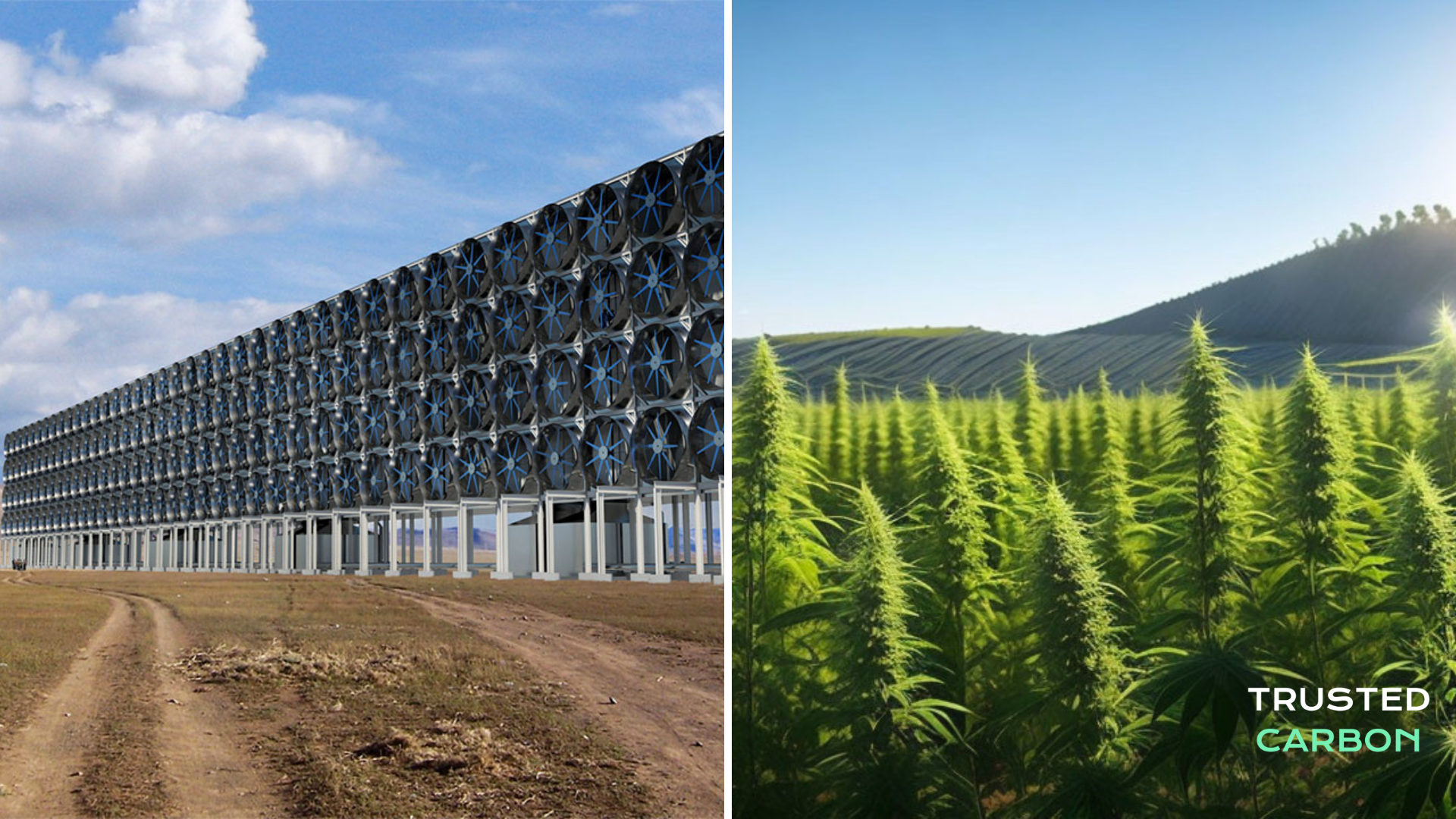The evolving landscape of carbon removal solutions has brought to light two distinct approaches: nature-based solutions like the Hemp Carbon Standard, and technology-driven methods such as Direct Air Capture Systems (DACS). Each approach carries unique benefits and challenges, especially when considering factors like cost, emissions, and environmental impact.
Nature-Based Solutions: The Hemp Carbon Standard
The Hemp Carbon Standard represents a nature-based approach to carbon removal. Here are the key benefits of this method:
- Low Cost and High Efficiency: The production cost of growing hemp is relatively low compared to the infrastructural and operational costs associated with engineered carbon capture methods. The simplicity and natural growth cycle of hemp make it a cost-effective solution for carbon sequestration.
- Positive Environmental Impact: Hemp cultivation contributes positively to soil health and biodiversity. Unlike some industrial processes, it does not emit significant amounts of CO2. Furthermore, when hemp is processed into materials like Hempcrete, it continues to sequester carbon, enhancing the overall environmental benefit.
- Carbon Sequestration and Storage: The Hemp Carbon Standard not only involves capturing CO2 from the atmosphere during the growth phase of hemp but also locks this carbon away when hemp is used in building materials. This long-term storage is a crucial aspect of effective carbon sequestration.
- Ecosystem Benefits: Beyond carbon capture, hemp cultivation can revitalize soil, prevent erosion, and support agricultural sustainability. It presents an opportunity to merge carbon sequestration efforts with broader ecological and agricultural benefits.
- Community Engagement and Economic Opportunities: Implementing nature-based solutions like hemp cultivation can engage local communities and create new economic opportunities, particularly in rural and agricultural areas.

Technology-Driven Solutions: Direct Air Capture Systems (DACS)
On the other hand, DACS represents the technological frontier in carbon removal. While innovative, DACS face several challenges:
- High Operational Costs: Currently, DACS are costly to implement and operate. Estimates suggest capture costs range from USD 125 to USD 335 per tonne of CO2 for large-scale plants built today, potentially reducing to under USD 100 per tonne by 2030. These costs encompass the construction, maintenance, and energy requirements of DACS facilities.
- Energy Intensive: DACS require significant energy inputs, primarily for the capture and conversion processes. This energy demand can lead to indirect CO2 emissions, especially if the energy source is not renewable.
- Land and Resource Use: Although DACS have a smaller physical footprint compared to some nature-based solutions, they still require substantial land for large-scale operations. Additionally, the infrastructure involved can have environmental impacts during the construction and operation phases.
- Limited Additional Environmental Benefits: Unlike nature-based solutions, DACS do not contribute to soil health or biodiversity. Their sole purpose is to capture atmospheric CO2, without the ancillary environmental benefits that solutions like hemp cultivation can offer.

Comparative Analysis
When comparing the Hemp Carbon Standard to DACS, several contrasts become apparent:
- Cost-Effectiveness: The Hemp Carbon Standard is more cost-effective, particularly in the current phase of DACS development where technological costs are still high.
- Environmental Impact: Nature-based solutions generally have a positive net impact on the environment beyond carbon sequestration. In contrast, DACS, while effective at capturing CO2, do not contribute to ecosystem health and can have higher indirect emissions due to their energy requirements.
- Scalability and Feasibility: While DACS can be scaled up to capture significant amounts of CO2, the scalability of nature-based solutions like hemp cultivation is subject to land availability and agricultural conditions. However, the integration of hemp cultivation into existing agricultural practices can enhance feasibility.
- Broader Benefits: Nature-based solutions offer broader ecological and socio-economic benefits, such as enhancing soil health, supporting biodiversity, and creating agricultural opportunities. DACS, being purely engineered, lack these broader impacts.
While both the Hemp Carbon Standard and DACS have roles to play in the global effort to reduce atmospheric CO2 levels, nature-based solutions currently offer a more cost-effective, environmentally beneficial, and socially inclusive approach to carbon sequestration. However, as technology advances, the gap in cost and efficiency between these two approaches may narrow, potentially making DACS a viable alternative in the future.




